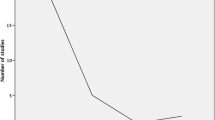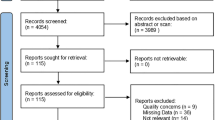Abstract
Background
As surgical robots begin to occupy a larger place in operating rooms around the world, continued innovation is necessary to improve our outcomes.
Methods
A comprehensive review of current surgical robotic user interfaces was performed to describe the modern surgical platforms, identify the benefits, and address the issues of feedback and limitations of visualization.
Results
Most robots currently used in surgery employ a master/slave relationship, with the surgeon seated at a work-console, manipulating the master system and visualizing the operation on a video screen. Although enormous strides have been made to advance current technology to the point of clinical use, limitations still exist. A lack of haptic feedback to the surgeon and the inability of the surgeon to be stationed at the operating table are the most notable examples. The future of robotic surgery sees a marked increase in the visualization technologies used in the operating room, as well as in the robots’ abilities to convey haptic feedback to the surgeon. This will allow unparalleled sensation for the surgeon and almost eliminate inadvertent tissue contact and injury.
Conclusions
A novel design for a user interface will allow the surgeon to have access to the patient bedside, remaining sterile throughout the procedure, employ a head-mounted three-dimensional visualization system, and allow the most intuitive master manipulation of the slave robot to date.














Similar content being viewed by others
References
Su L (2009) Role of robotics in modern urologic practice. Curr Opin Urol 19(1):63–64
Lee DI (2009) Robotic prostatectomy: what we have learned and where we are going. Yonsei Med J 50:177–181. doi:10.3349/ymj.2009.50.2.177
Palep JH (2009) Robotic assisted minimally invasive surgery. J Minim Access Surg 5(1):1–7
Shah A, Okotie OT, Zhao L, Pins MR, Bhalani V, Dalton DP (2008) Pathologic outcomes during the learning curve for robotic-assisted laparoscopic radical prostatectomy. Int Braz J Urol 34(2):159–163
Tan GY, Goel RK, Kaouk JH, Tewari AK (2009) Technological advances in robotic-assisted laparoscopic surgery. Urol Clin North Am 36(2):237–249
Phee SJ, Low SC, Huynh VA, Kencana AP, Sun ZL, Yang K (2009) Master and slave transluminal endoscopic robot (MASTER) for natural orifice transluminal endoscopic surgery (NOTES). Conf Proc IEEE Eng Med Biol Soc 2009:1192–1195
Sun Z, Ang RY, Lim EW, Wang Z, Ho KY, Phee SJ (2011) Enhancement of a master-slave robotic system for natural orifice transluminal endoscopic surgery. Ann Acad Med Singapore 40(5):223–228
Phee SJ, Ho KY, Lomanto D, Low SC, Huynh VA, Kencana AP, Yang K, Sun ZL, Chung SC (2010) Natural orifice transgastric endoscopic wedge hepatic resection in an experimental model using an intuitively controlled master and slave transluminal endoscopic robot (MASTER). Surg Endosc 24(9):2293–2298
Ho KY, Phee SJ, Shabbir A, Low SC, Huynh VA, Kencana AP, Yang K, Lomanto D, So BY, Wong YY, Chung SC (2010) Endoscopic submucosal dissection of gastric lesions by using a Master and Slave Transluminal Endoscopic Robot (MASTER). Gastrointest Endosc 72(3):593–599
Hagn U, Konietschke R, Tobergte A, Nickl M, Jörg S, Kübler B, Passig G, Gröger M, Fröhlich F, Seibold U, Le-Tien L, Albu-Schäffer A, Nothhelfer A, Hacker F, Grebenstein M, Hirzinger G (2010) DLR MiroSurge: a versatile system for research in endoscopic telesurgery. Int J Comput Assist Radiol Surg 5(2):183–193
Kuebler B, Seibold U, Hirzinger G (2005) Development of actuated and sensor integrated forceps for minimally invasive robotic surgery. Int J Med Robot 1(3):96–107. doi:10.1581/mrcas.2005.010305and10.1002/rcs.33
Konietschke R, Hagn U, Nickl M, Jörg S, Tobergte A, Passig G, Seibold U, Le Tien L, Kuebler B, Gröger M, Fröhlich F, Rink C, Albu-Schäffer A, Grebenstein M, Ortmaier T, Hirzinger G (2009) The DLR MiroSurge: a robotic system for surgery. Video contribution presented at ICRA
Suppa M, Kielhofer S, Langwald J, Hacker F, Strobl KH, Hirzinger G (2007) The 3D-modeller: a multi-purpose vision platform. IEEE Int Conf Robot Autom 2007:781–787. doi:10.1109/ROBOT.2007.363081
Harnett BM, Doarn CR, Rosen J, Hannaford B, Broderick TJ (2008) Evaluation of unmanned airborne vehicles and mobile robotic telesurgery in an extreme environment. Telemed J E Health 14(6):539–544
Rosen J, Hannaford B (2006) Doc at a distance. IEEE Spectrum 6:34
Bornhoft JM, Strabala KW, Wortman TD, Lehman AC, Oleynikov D, Farritor SM (2011) Stereoscopic visualization and haptic technology used to create a virtual environment for remote surgery. Biomed Sci Instrum 47:76–81
Zhang X, Nelson C, Oleynikov D (2011) Natural haptic interface for single-port surgical robot with gravity compensation. Int J Med Robot 7(S1). Epub 4 Nov 2011
Lum M, Friedman D, Rosen J et al (2009) The RAVEN–design and validation of a telesurgery system. Int J Rob Res 28(9):1183–1197
Lang MJ, Greer AD, Sutherland GR (2011) Intra-operative robotics: NeuroArm. Acta Neurochir Suppl 109:231–236
Samad MD, Hu Y, Sutherland GR (2010) Effect of force feedback from each DOF on the motion accuracy of a surgical tool in performing a robot-assisted tracing task. Conf Proc IEEE Eng Med Biol Soc 2010:2093–2096
Sutherland GR, Latour I, Greer AD (2008) Integrating an image-guided robot with intraoperative MRI. IEEE Eng Med Biol Mag 27(3):59–65
Joel P, Rosen J, Burns S (2007) Upper-limb powered exoskeleton design. IEEE ASME Trans Mechatron 12(4):408–417
Joel P, Powell J, Rosen J (2009) Isotropy of an upper limb exoskeleton and the kinematics and dynamics of the human arm. Appl Bionics Biomech 6(2):175–191
Ettore C, Rosen J, Joel P, Burns S (2006) Myoprocessor for neural controlled powered exoskeleton arm. IEEE Trans Biomed Eng 53(11):2387–2396
Wortman TD, Strabala KW, Lehman AC, Farritor SM, Oleynikov D (2011) Laparoendoscopic single-site surgery using a multi-functional miniature in vivo robot. Int J Med Robot 7(1):17–21
Lehman A, Wood N, Farritor S, Goede M, Oleynikov D (2011) Dexterous miniature robot for advanced minimally invasive surgery. Surg Endosc 25(1):119–123
Teber D, Baumhauer M, Guven EO et al (2009) Robotic and imaging in urological surgery. Curr Opin Urol 19:108–113
Pamplona VF, Fernandes LAF, Prauchner J, Nedel LP, Olivier MM (2008) The image-based data glove. Proceedings of X Symposium on Virtual Real (SVR 2008) 204–211
Sturman DJ, Zeltzer D (1994) A survey of glove based-input. IEEE Comput Graph Appl 14(1):30–39
Faraz A, Payandeh S (2000) Engineering approaches to mechanical and robotic design for minimally invasive surgery (MIS). Kluwer Academic Publishers, Boston, pp 1–11
Okamura AM (2009) Haptic feedback in robot-assisted minimally invasive surgery. Curr Opin Urol 19(1):102–107
Tholey G, Desai JP (2007) A general purpose 7 DOF haptic device: applications towards robot-assisted surgery. IEEE/ASME Trans Mech 12(6):662–669
Mavash M (2006) Novel approach for modeling separating forces between deformable bodies. IEEE Trans Inf Technol Biomed 10(3):618–626
Mavash M, Hayward V (2004) High fidelity haptic synthesis of contact with deformable bodies. IEEE Comput Graph Appl 24(2):28–55
Mavash M, Voo LM, Kim D et al (2008) Modeling the forces of cutting with scissors. IEEE Trans Biomed Eng 55(3):848–856
Weiss H, Ortmaier T, Maass H et al (2003) A virtual reality based haptic surgical training system. Comput Aided Surg 8(5):269–272
Wagner CR, Howe RD (2007) Force feedback benefit depends on experience in multiple degree of freedom robotic surgery. IEEE Trans Rob 23(6):1235–1240
Disclosures
Dmitry Oleynikov is a stockholder of Virtual Incision Corporation. R. Stephen Otte, Anton Simorov, and Courtni Kopietz have no conflicts of interest or financial ties to disclose.
Author information
Authors and Affiliations
Corresponding author
Rights and permissions
About this article
Cite this article
Simorov, A., Otte, R.S., Kopietz, C.M. et al. Review of surgical robotics user interface: what is the best way to control robotic surgery?. Surg Endosc 26, 2117–2125 (2012). https://doi.org/10.1007/s00464-012-2182-y
Received:
Accepted:
Published:
Issue Date:
DOI: https://doi.org/10.1007/s00464-012-2182-y




